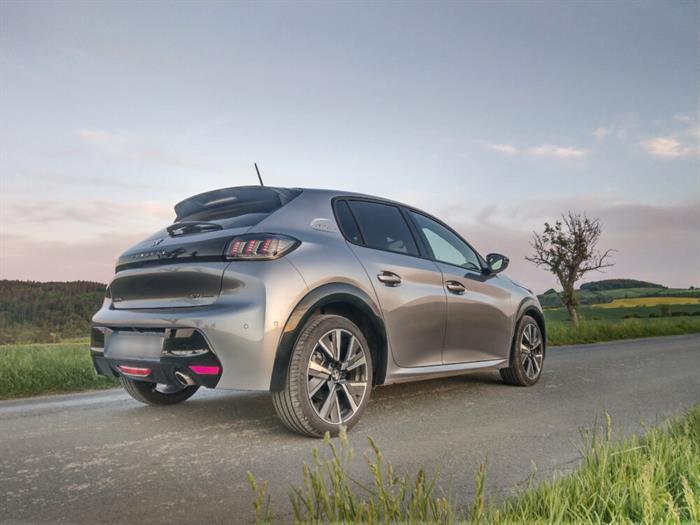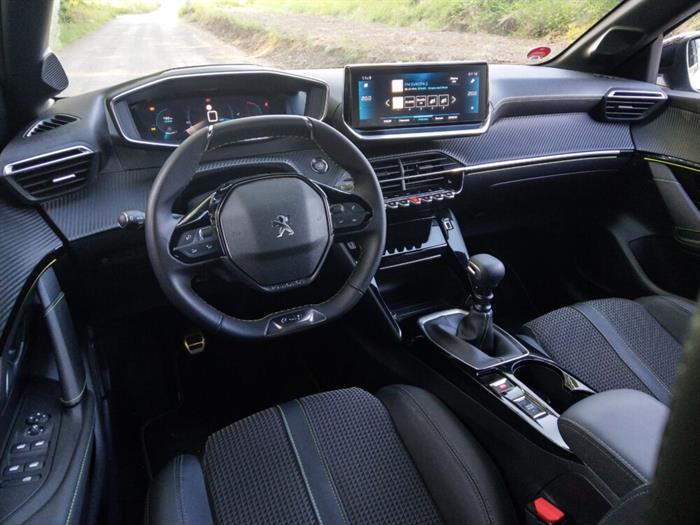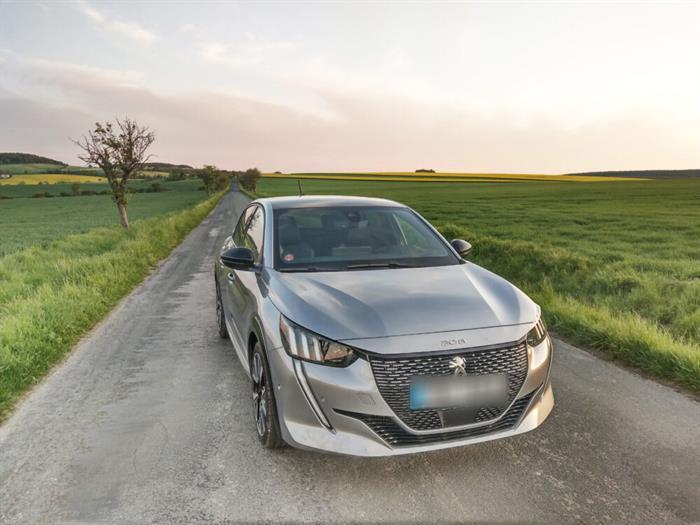The new Peugeot 208, European Car of the Year 2020, has already passed our editorial test in the past. I have a certain weakness for this model, justified by its pleasant exterior, original interior and dynamic driving characteristics, which led to arranging this car for the editorial test while still in diesel specification.
Therefore, we currently subjected the "208" in GT Line equipment to the editorial test, with a diesel 1.5 BlueHdi turbocharged engine and a manual six-speed gearbox.

Exterior
In terms of exterior design, the new "two-eighth" ranked very well among other cars from the automaker's portfolio.
The top-of-the-range GT Line will offer a similar lighting signature, which was very successful with the 508 model. The light "three claws" make the car very dynamic and easily recognizable. The front part must not be missing a bulky front mask extending deep into the front bumper.
In the side profile, the contrasting black lacquered trims attract attention, as well as the rather long bonnet for the car's proportions, which pushes the cabin itself more towards the rear of the car. Interesting details include a pair of prominent moldings, or a plaque with the designation of the GT Line equipment on the "C" pillar.
The rear part must not be missing the lights, which again have a typical light signature for the car. The taillights are effectively connected to each other and thus create one continuous horizontal element, which, thanks to the already announced black paintwork, effectively contrasts with the color of the car itself. A large part of the rear bumper is then painted black, or the rather bulky rear door lollipop.
The new generation of the Peugeot 208 is still a great car for me, which offers imagination, dynamism and considerable originality in terms of exterior design.

Interior
The interior of the new generation Peugeot 208 is fully original, imaginative and applies the i-Cockpit principle in accordance with the current trends of the car manufacturer. The "28th" also takes this principle to a higher level and offers the i-Cockpit in a three-dimensional design.
The dashboard itself has clear horizontal proportions, which, for example, are significantly more playful and structured than the "five-eighth". The central motif continues to be the on-board infotainment display, which offers a diagonal of 5, 7 and 10″. The display, through which many of the car's functions are controlled, then has a fairly familiar environment and graphics. Its installation in the dashboard is distinctive, clearly oriented towards the driver and ergonomically very well functioning.
Under the infotainment display itself, there are both purely touch and mechanical controls. Their centralization and fairly discreet treatment frees up space for other elements on the dashboard, such as a flip-up box that has space for your mobile phone. The door of the box practically tilts towards you to a horizontal position, after it is folded out, the size of the storage space increases pleasantly. On the sides of this box there are ports for classic USB and USB-C.
The space between the seats offered two drink holders, a controller for the electronic handbrake and a controller for selecting driving modes, as well as an armrest and a classic manual transmission selector. It has fairly accurate, but unfortunately somewhat longer shifting paths.
The instrument compartment in front of the driver is a separate chapter. Traditionally, this is raised above the small and flattened multi-function steering wheel in accordance with the I-Cockpit principle. However, Peugeot is coming up with something new and has given the small 208 a chapel that has a 3D graphic treatise. Information about the car and driving is then displayed in 2 levels according to importance and priority. You can then personalize the displayed data as you wish. The 3D i-Cockpit and its functioning are difficult to describe, let alone photograph, but my feelings about it are only positive as a result.
The interior space of the 208 is intended mainly for the crew in the front positions, there are spacious and comfortable seats with lateral guidance. In the rear positions, it's noticeably worse. Taller figures will have a problem here, both in the knee area and overhead.
The luggage compartment offers a decent 309 liters of volume and good access.
The resulting evaluation of the ergonomics of the i-Cockpit is still purely subjective, but for me it is very satisfactory. The interior goes hand in hand with the exterior, so it is timeless and definitely pleasing.

With diesel under the hood
The Peugeot 208 is currently offered with both petrol and diesel engines. The gasoline engine is represented here by a turbocharged three-cylinder 1.2 PureTech , which is available in three power variants of 55, 74 and 96 kW.
The tested diesel will then offer the only four-cylinder in the offer, it is a turbocharged 1.5 BlueHdi engine, which is here tuned for a respectable 75 kW (100 hp), which is available at 3500 rpm. The torque is also very decent, its 250 Nm is available from 1750 rpm. The tested diesel engine is then exclusively connected to a six-speed manual transmission.
In reality, I had perhaps a better comprehensive impression of the diesel engine than of the previously tested 74 kW gasoline three-cylinder. "Twenty-eighth" with diesel under the hood can be nimble, very nimble in sports mode, and as a result, very economical. After a weekly editorial test, the on-board computer showed an average consumption of 4.5 liters per 100 km.
I therefore rate the overall driving impressions of the car very positively. Several factors contribute to a good rating. I liked the i-Cockpit principle before, it also works very well in the new 208, with a sporty spirit. There is also a six-speed manual, which has fairly decent shifting paths, especially excellent gradation, which at the highway limit rolls the tested diesel around an economical two thousand revolutions. The steering itself is perhaps more overpowered in normal mode, on the other hand, the main area of the 208 is the city, and here, thanks to light steering and a large range, the car is excellently manoeuvrable. In terms of chassis, the diesel version feels more comfortable than the previously tested petrol. Otherwise, the chassis is quite reliable and in sports mode, even the diesel engine will offer you a considerable amount of driving pleasure.

In conclusion
The new 208 starts in basic Like equipment with a 1.2 PureTech gasoline three-cylinder engine (75 hp) and a five-speed manual transmission at a promotional price of CZK 298,000 including VAT. You can buy the cheapest tested diesel as part of the Active equipment from CZK 378,000 including VAT. The piece we tested, i.e. a car with diesel under the hood, a six-speed manual and the highest GT Line equipment, so the price list starts at CZK 485,000 including VAT.
The new Peugeot 208 is a great car that offers a fresh and dynamic design and a well-crafted and imaginative interior. The diesel variant is then a very good choice, which combines very decent driving dynamics and economical operation.
Source: Author's text
Image source: Author's own photos


























